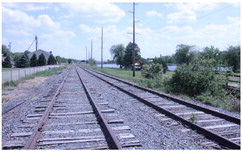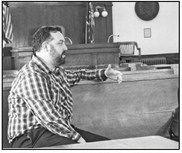Communities need to plan now for uses for rail corridor


Despite the lingering hopes of railroad aficionados, the days of freight train traffic on the spur line between Spencer and Medford are all but over.
Now is the time for local and regional governments to look to the future and how the rail corridor can be used to bring economic benefit to the communities it connects.
The process for officially abandoning the freight rail line takes time and is loaded with bureaucratic red tape. Rather than sitting and twiddling their thumbs or pretending that a customer could come forward and make it worth the investment for the railroad to bring the line back into service, community leaders must begin looking ahead about opportunities that will bring benefit to the region.
Last year, rail crews removed a section of the rail on the line near Spencer, effectively taking the entire line out of service. Trains can’t travel where there are no rails to ride on.
The death knell for the spur has been ringing for decades. Canadian National’s focus was on developing the lines to accommodate the increasing amount of intermodal rail traffic that runs on its lines connecting Duluth and Chicago. This is the dual line that runs through Gilman and western Taylor County.
At one time, the rail line into Medford was busy. It was not uncommon to see trains slowly crawling through downtown Medford dropping off a load of fertilizer at the Medford Cooperative fertilizer plant, a tanker car of LP gas to Lake’s Gas or delivering raw materials to area factories.
Over time, the amount of traffic on the line declined steadily as businesses found benefits to hauling material and products over the roads. The spur was included as part of a sale of regional rail corridors to Kansasbased Watco, but there were few illusions that it was more than an add-on to dump aging and underutilized assets.
Watco representatives worked with local civic, economic and business leaders to appeal to potential customers in the area to keep the rail line viable. This has largely failed to materialize. If a customer seeking enough rail service to keep the line economically viable were to come forward that would be a game changer for the future of the rail line. That seems unlikely at this point.
Rather than just playing the waiting game, local and regional leaders should plan for the future. The Pine Line Rail Trail, which goes north from Medford into Price County, is an important year-round recreational corridor with snowmobiles in winter and non-motorized use the rest of the year. Extending a rail trail south to Spencer would be an economic boost to businesses in communities all along the line.
Extension of trails for tourism and recreation is just one potential use. Serious discussion needs to begin for the long-term future of the rail corridor rather than simply letting it sit and rust away.




